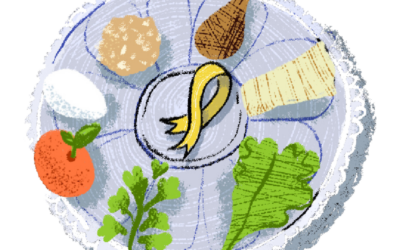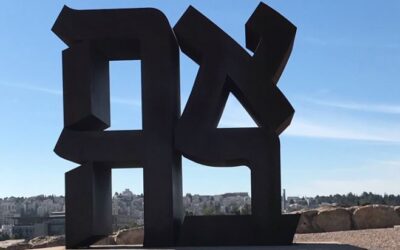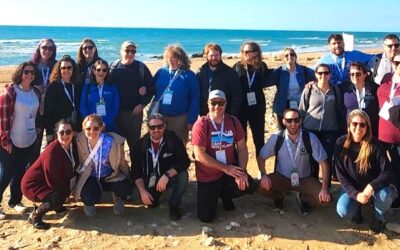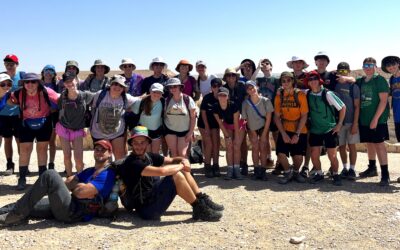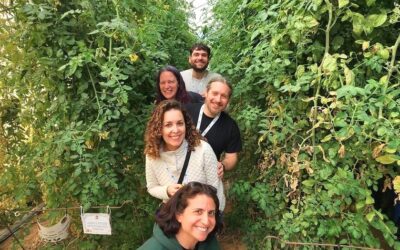By Rabbi David Wilfond, Director of Education, NFTY in Israel
This week, I’ll be heading to Europe with eight engaging, creative NFTY in Israel educators to develop our summer experience in Prague and Poland. We will visit all the sites that our teens visit and explore how to make the story of European Jewry come alive and remain relevant today.
 We’ll begin our tour in Prague, the capital of the Czech Republic. Our teens are usually awed by the beautiful medieval architecture of the Prague Castle and the 12th century Charles Bridge decorated with historical statues. Prague is lively, picturesque, and fun. The historic Jewish quarter has a joyful feeling about it. We get to tell stories like the legend of wise Rabbi Low and his heroic Golem, drawing parallels to modern-day superhero tales!
We’ll begin our tour in Prague, the capital of the Czech Republic. Our teens are usually awed by the beautiful medieval architecture of the Prague Castle and the 12th century Charles Bridge decorated with historical statues. Prague is lively, picturesque, and fun. The historic Jewish quarter has a joyful feeling about it. We get to tell stories like the legend of wise Rabbi Low and his heroic Golem, drawing parallels to modern-day superhero tales!
Even in this beautiful, energetic city, the history of the 1930s and ‘40s looms large. This week, our educators will prepare to examine that history with our teens. Today there are only about 3,000 Jews in Prague, while up until 1940 the community numbered 90,000. Where did they all go? What happened to this beautiful, creative, and productive Jewish community? These are the kinds of questions we begin to explore in Prague.
Some of the answers – and plenty of new questions! – come by following the path of the 20th century Prague Jewish community to Terezin, the site of their deportation. What can we learn by recounting the experiences of Rabbi Leo Baeck, the psychiatrist Dr. Viktor Frankl, and the first woman Rabbi, Regina Jonas, who all made heroic efforts to keep people’s spirits intact as they faced hardship and deprivation? Why would the Jews of Terezin build and maintain a secret synagogue despite the risk of retaliation if discovered?
 Continuing on to Poland, our first stop is Krakow, known for its vibrant pre-war Jewish Quarter, its brutal wartime ghetto, and the famous Schindler Factory. Krakow is central to the story of the Holocaust, and closely connected to the Auschwitz-Birkenau concentration camp.
Continuing on to Poland, our first stop is Krakow, known for its vibrant pre-war Jewish Quarter, its brutal wartime ghetto, and the famous Schindler Factory. Krakow is central to the story of the Holocaust, and closely connected to the Auschwitz-Birkenau concentration camp.
A visit to Auschwitz is a sobering lesson in the potential for cruelty that can lurk in the human soul. It can be also an inspiring opportunity to encounter the stories of prisoners who refused to surrender their dignity, their morality, and who encouraged others to survive if only to be able to tell the tale of survival against all odds. These are challenging discussions even for experienced educators, so it’s essential that we visit Auschwitz next week and develop the tools to help teens digest all the emotions that may come up that day.
Our final stop in Poland is Warsaw, the site of the largest Nazi-created ghetto. To understand Jewish life in pre-war Warsaw, we tour Warsaw’s Old Jewish Cemetery. Here, we visit and honor the playwrights, novelists, stage and film stars, Hasidic mystics, socialist ideologues, and Zionists who were active in the city’s rich, culturally diverse community. We’ll also follow the Route of Heroism, tracing the story of the Warsaw Ghetto Uprising in 1943. This difficult episode explores the morality of physical resistance and what constitutes a dignified death. There are no easy answers here.
This history is important in the journey of the Jewish people. So too is the present.
 Our travels through Eastern Europe also give us the opportunity to meet the small, growing Jewish communities returning to Poland. We celebrate Shabbat with the young Reform congregation of Krakow – a living reminder that we make our own destiny even when there are those who seek to take our agency from us. There are challenges in the present day as well. The recent law passed by Poland’s government seeks to censor honest accounting of the Holocaust in Poland. We will explore this new issue, draw parallels to the history we’ve come here to honor, and examine why a modern government would choose to gild its country’s history rather than grapple with and grow from it.
Our travels through Eastern Europe also give us the opportunity to meet the small, growing Jewish communities returning to Poland. We celebrate Shabbat with the young Reform congregation of Krakow – a living reminder that we make our own destiny even when there are those who seek to take our agency from us. There are challenges in the present day as well. The recent law passed by Poland’s government seeks to censor honest accounting of the Holocaust in Poland. We will explore this new issue, draw parallels to the history we’ve come here to honor, and examine why a modern government would choose to gild its country’s history rather than grapple with and grow from it.
Emotionally and intellectually, the teens’ journey through Europe promises to be intense and meaningful. In only one week, our participants will examine 1,000 years of Jewish life, and the creativity and coping that shone through during one of humanity’s darkest chapters. This week’s trip to Europe provides our educators with the tools to support our teens as they wrestle with this history.
